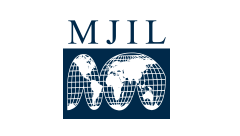Abstract
If, with the benefit of hindsight, Mr. Choudhury's case was a harbinger of the emergence of various problems associated with Islam and the rights of Muslim minorities in European nation-states, then the events of September 11, 2001 have propelled these issues to the forefront of law and politics in a way unimaginable even a decade earlier. In Denmark, cartoons depicting the Islamic prophet Muhammad as a suicide bomber have been published leading to protests and violence across Europe and the Islamic world; a law prohibiting students in public schools from wearing symbols or attire through which they conspicuously exhibit a religious affiliation has been enacted in France; the French Parliament has proceeded to enact a law which now bans the wearing of the burqa and other Islamic face coverings in all public places; and a popular referendum has passed in Switzerland prohibiting the construction of minarets during which a political party used posters depicting minarets as missiles standing on top of the Swiss flag behind a woman wearing a burqa. This Article argues that what is most interesting about these controversies involving Islam and the place of Islamic norms in European nation-states (and the international legal sphere more broadly) is how such encounters are unsettling existing normative legal categories and catalyzing reconsideration of both the historical and theoretical premises of modern liberal political orders. These controversies raise two critical questions for ECHR jurisprudence: First, what is the nature and scope of the right to freedom of religion and belief? Does it include, for example, a right to be free from injury or offense to religious sensibilities? If so, why has the Court held that it is not discriminatory for a state to recognize and protect this right in the case of one religion (Christianity) but not another (Islam)? Second, what is the relationship between religion and morality in the "secular" public sphere? This question applies, not only. to the public realms of different European nation-states, but also to the supranational nomos of the European Court of Human Rights itself. How does the Court imagine and construct notions of secularism and neutrality in each sphere? What role, politically and normatively, does the margin of appreciation doctrine play in this aspect of the Court's Article 9 jurisprudence?
Recommended Citation
Peter G. Danchin,
Islam in the Secular Nomos of the European Court of Human Rights,
32
Mich. J. Int'l L.
663
(2011).
Available at:
https://repository.law.umich.edu/mjil/vol32/iss4/2
Included in
Civil Rights and Discrimination Commons, Courts Commons, European Law Commons, Religion Law Commons

